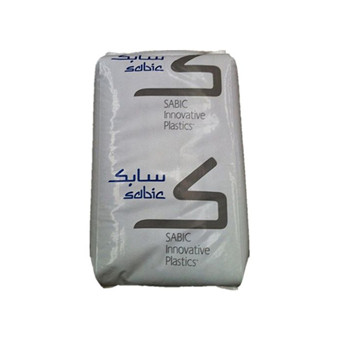PC LEXAN™ HP2-1H111 SABIC INNOVATIVE SINGAPHORE
37
- Properties:High mobility
- Usages:medical caremedicine
Technical Data Sheet
| optical performance | Test Condition | Test Method | Test Result |
|---|---|---|---|
| turbidity | 2540μm | ASTM D1003 | 1.0 % |
| Refractive index | ASTM D542 | 1.586 | |
| transmissivity | 2540μm | ASTM D1003 | 88.0 % |
| impact performance | Test Condition | Test Method | Test Result |
|---|---|---|---|
| Impact strength of cantilever beam gap | ASTM D1822 | 546 kJ/m² | |
| -30°C | ISO 180/1A | 10 kJ/m² | |
| 23°C | ISO 180/1A | 12 kJ/m² | |
| Dart impact | 23°C,EnergyatPeakLoad | ASTM D3763 | 62.0 J |
| 23°C | ASTM D3029 | 169 J |
| flammability | Test Condition | Test Method | Test Result |
|---|---|---|---|
| UL flame retardant rating | 1.5mm | UL 94 | HB |
| Extreme Oxygen Index | ISO 4589-2 | 25 % |
| mechanical properties | Test Condition | Test Method | Test Result |
|---|---|---|---|
| tensile strength | Break | ISO 527-2/50 | 65.0 Mpa |
| Break | ASTM D638 | 68.0 Mpa | |
| Yield | ISO 527-2/50 | 63.0 Mpa | |
| Yield | ASTM D638 | 62.0 Mpa | |
| Tensile modulus | ISO 527-2/1 | 2350 Mpa | |
| ASTM D638 | 2370 Mpa | ||
| elongation | Yield | ASTM D638 | 7.0 % |
| Tensile strain | Yield | ISO 527-2/50 | 6.0 % |
| elongation | Break | ASTM D638 | 130 % |
| Tensile strain | Break | ISO 527-2/50 | 100 % |
| Bending modulus | 50.0mmSpan | ASTM D790 | 2340 Mpa |
| ISO 178 | 2300 Mpa | ||
| bending strength | ISO 178 | 90.0 Mpa | |
| Yield,50.0mmSpan | ASTM D790 | 96.0 Mpa | |
| Taber abraser | 1000Cycles,1000g,CS-17Wheel | ASTM D1044 | 10.0 mg |
| thermal performance | Test Condition | Test Method | Test Result |
|---|---|---|---|
| Vicat softening temperature | ASTM D152510 | 154 °C | |
| -- | ISO 306/B50 | 140 °C | |
| Hot deformation temperature | 1.8MPa,Unannealed,100mmSpan | ISO 75-2/Ae | 122 °C |
| 1.8MPa,Unannealed,6.40mm | ASTM D648 | 129 °C | |
| 0.45MPa,Unannealed,100mmSpan | ISO 75-2/Be | 133 °C | |
| thermal conductivity | ISO 8302 | 0.20 W/m/K | |
| ASTMC177 | 0.19 W/m/K | ||
| Hot deformation temperature | 0.45MPa,Unannealed,6.40mm | ASTM D648 | 137 °C |
| RTI Str | UL 746 | 130 °C | |
| RTI Imp | UL 746 | 130 °C | |
| RTI Elec | UL 746 | 130 °C | |
| Vicat softening temperature | -- | ISO 306/B120 | 141 °C |
| Ball Pressure Test | 125°C | IEC 60695-10-2 | Pass |
| Linear coefficient of thermal expansion | MD:-40to95°C | ASTME831 | 6.8E-05 cm/cm/°C |
| MD:23to80°C | ISO 11359-2 | 7E-05 cm/cm/°C | |
| specific heat | ASTMC351 | 1250 J/kg/°C |
| Physical properties | Test Condition | Test Method | Test Result |
|---|---|---|---|
| Water absorption rate | Equilibrium,100°C | ASTM D570 | 0.58 % |
| Equilibrium,23°C | ASTM D570 | 0.35 % | |
| 24hr | ASTM D570 | 0.15 % | |
| Shrinkage rate | MD:3.20mm | Internal Method | 0.50-0.70 % |
| Specific volume | ASTM D792 | 0.830 cm³/g | |
| melt mass-flow rate | 300°C/1.2kg | ASTM D1238 | 18 g/10min |
| Melt Volume Flow Rate (MVR) | 300°C/1.2kg | ISO 1133 | 16.0 cm3/10min |
| Electrical performance | Test Condition | Test Method | Test Result |
|---|---|---|---|
| Dielectric strength | 3.20mm,in Oil | IEC 60243-1 | 17 KV/mm |
| 3.20mm,inAir | ASTM D149 | 15 KV/mm | |
| Volume resistivity | IEC 60093 | >1.0E+15 ohms·cm | |
| ASTM D257 | >1.0E+17 ohms·cm | ||
| Surface resistivity | IEC 60093 | >1.0E+15 ohms | |
| Dissipation factor | 50Hz | ASTM D150 | 9E-04 |
| 60Hz | ASTM D150 | 9E-04 | |
| Dielectric constant | 50Hz | ASTM D150 | 3.17 |
| 60Hz | ASTM D150 | 3.17 | |
| 1MHz | ASTM D150 | 2.96 | |
| Relative permittivity | 50Hz | IEC 60250 | 2.70 |
| 60Hz | IEC 60250 | 2.70 | |
| 1MHz | IEC 60250 | 2.70 | |
| Dissipation factor | 1MHz | ASTM D150 | 0.010 |
| 50Hz | IEC 60250 | 1E-03 | |
| 60Hz | IEC 60250 | 1E-03 | |
| 1MHz | IEC 60250 | 0.010 | |
| Compared to the anti leakage trace index | CTI | UL 746 | PLC 2 |
| High arc combustion index | HAI | UL 746 | PLC 1 |
| High voltage arc tracing rate | HVTR | UL 746 | PLC 2 |
| Hot wire ignition | HWI | UL 746 | PLC 2 |
| hardness | Test Condition | Test Method | Test Result |
|---|---|---|---|
| Rockwell hardness | M-Sale | ASTM D785 | 70 |
| R-Sale | ASTM D785 | 118 |
IMPORTANT NOTES: Plas.com collected the data in the data sheet from the material manufacturers. Plas.com makes the best effort to improve the accuracy of the data, but has no responsibility for the data. We strongly recommend verifying the validity of the data with the material manufacturers before making a final decision.
